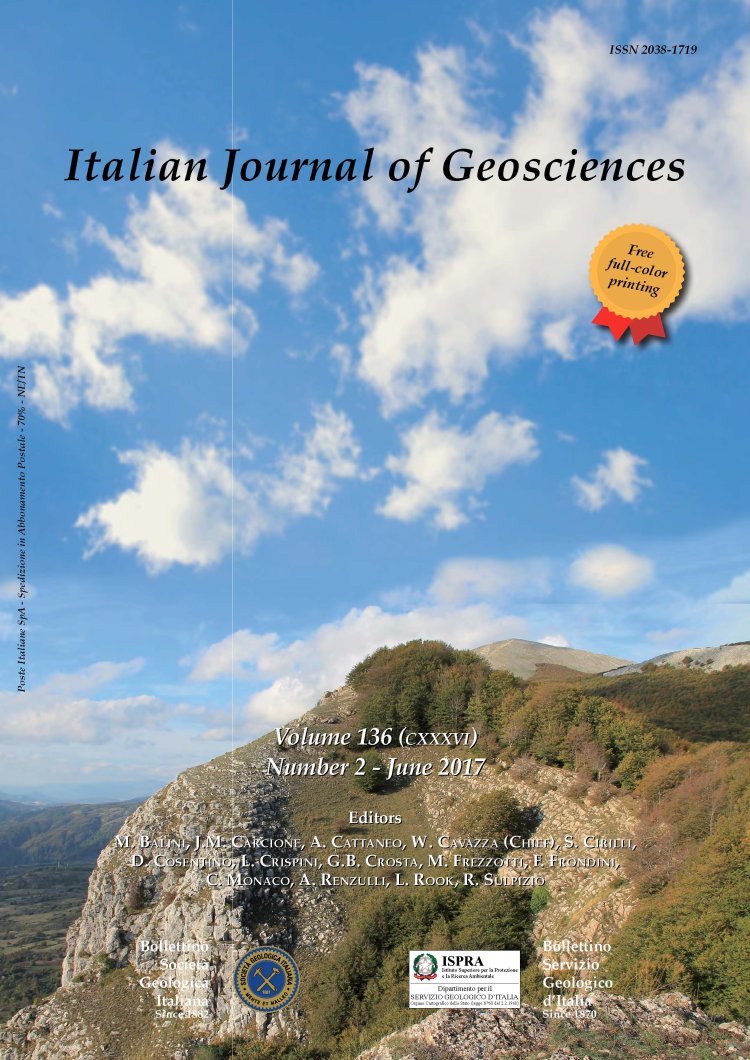
Mineralogical, petrographic and chemical analysis of geomaterials used in the mortars of Roman Nora theatre (south Sardinia, Italy)
Stefano Columbu & Anna Maria Garau
Dipartimento di Scienze Chimiche e Geologiche, Università degli Studi di Cagliari, Via Trentino 51, 09127 Cagliari, Italy. Corresponding author e-mail: columbus@unica.it.
Volume: 136 (2017) f.2
Pages: 238-262
Abstract
The composition and the origin of raw materials used in the ancient mortars and concrete of the Nora theatre (first century AD) have been analysed to define their provenance and construction technologies of the Roman period.
The use of geomaterials in the binder / aggregate mixtures of the mortars vary according to their function in the different sectors (i.e., structure-wall, tribunalia vaults, wall of external niches, foundation of cavea tiers, stage inner wall) but also according to different construction phases of the theatre or the work-steps. The mortars with structural function are mainly hydraulic (e.g., concrete of vaults, jointing and foundation mortars of cavea ashlars), while the lime mortars were used mainly for plasters, and rarely as bedding mortars. As recommended by Vitruvius, in the hydraulic mortars were mainly used volcanic rocks, as coarse and fine pozzolanic aggregate (pulvis puteolanus), and quartz-feldspar sands (present as crystal-clasts with an almost constant ratio of about 2:1, respectively). The cocciopesto is anomalously rare or absent. In the mortars local dacitic volcanic rock were also used, especially in the concrete as caementia.
The grey-black volcanic rocks are glasses with characteristics more near to obsidian and less to natural pozzolan normally used in the Roman period. To identify the provenance of these glasses, a geochemical comparison between the samples taken from the theatre mortars and the volcanic outcrops of some probable Sardinian source areas is made by XRF and SEM-EDS / WDS analysis.
To verify the quality of the pozzolan (by its chemical reaction with the binder), the edges and inside of volcanic glasses were analysed with an SEM-EDS microprobe, while the compositional characteristics and the hydraulic degree of the binder was analysed with XRPD and TG/DSC methods, respectively.
The use of this kind of pozzolanic glass, without local origins, is a novelty because it has never been found in the mortars of the archaeological site of Nora. Given the wide use of Sardinian obsidian in the Neolithic or Calcolithic periods for production of tools and instruments, some considerations about its use, origin and trade are made.
The use of geomaterials in the binder / aggregate mixtures of the mortars vary according to their function in the different sectors (i.e., structure-wall, tribunalia vaults, wall of external niches, foundation of cavea tiers, stage inner wall) but also according to different construction phases of the theatre or the work-steps. The mortars with structural function are mainly hydraulic (e.g., concrete of vaults, jointing and foundation mortars of cavea ashlars), while the lime mortars were used mainly for plasters, and rarely as bedding mortars. As recommended by Vitruvius, in the hydraulic mortars were mainly used volcanic rocks, as coarse and fine pozzolanic aggregate (pulvis puteolanus), and quartz-feldspar sands (present as crystal-clasts with an almost constant ratio of about 2:1, respectively). The cocciopesto is anomalously rare or absent. In the mortars local dacitic volcanic rock were also used, especially in the concrete as caementia.
The grey-black volcanic rocks are glasses with characteristics more near to obsidian and less to natural pozzolan normally used in the Roman period. To identify the provenance of these glasses, a geochemical comparison between the samples taken from the theatre mortars and the volcanic outcrops of some probable Sardinian source areas is made by XRF and SEM-EDS / WDS analysis.
To verify the quality of the pozzolan (by its chemical reaction with the binder), the edges and inside of volcanic glasses were analysed with an SEM-EDS microprobe, while the compositional characteristics and the hydraulic degree of the binder was analysed with XRPD and TG/DSC methods, respectively.
The use of this kind of pozzolanic glass, without local origins, is a novelty because it has never been found in the mortars of the archaeological site of Nora. Given the wide use of Sardinian obsidian in the Neolithic or Calcolithic periods for production of tools and instruments, some considerations about its use, origin and trade are made.
Keywords
Pozzolan, Obsidian glass, XRF, SEM-EDS / WDS and TG/DSC analysis, Petrography, Sardinian Neolithic and Calcolithic.
Get Full Text